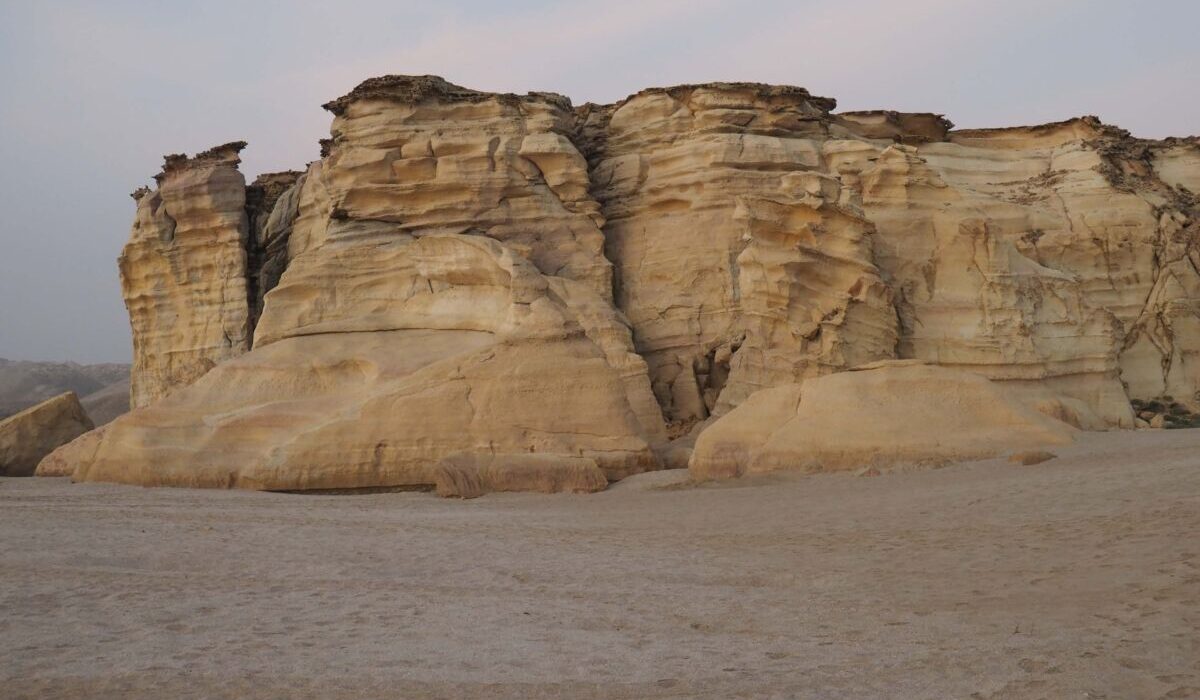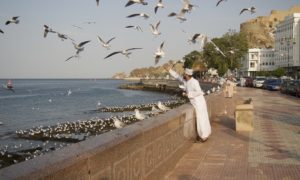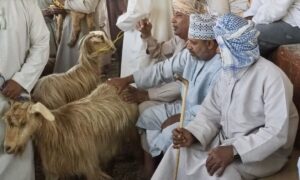
Seeing the big old turtle slowly creep out of the hole she had dug in the sand and slow plod to the Indian ocean as the sun was rising was a mystical experience for me–somehow spiritual.
It started before dawn, when in the murky darkness, I walked with about a dozen people and an Omani guide from our hotel out to the beach in search of turtles who had arrived early in the night to lay their eggs.
The location was the Raz al Jinz , a well known turtle reserve in the eastern most part of Oman, the only place where the public can watch the nesting process of the endangered Green Turtles.
This stunning part of the world features unspoiled shorelines, golden deserts, luxuriant green oases and rugged mountains.

In the dark, our guide shined a special light so we could see the turtle buried in the sand without disturbing her. Somehow the turtles know only to come up onto the beach to lay their eggs at night.

Turtles use the tips of their paws to make the hole and then again after laying their eggs to cover them. They dig deep in hopes of protecting the eggs from foxes all under the cover of darkness.
I marveled in the experience as the morning sun began to shimmer on the sand and water and eventually, the turtle we were watching climbed out of her nest and slowly made her way on the beach towards the water. I wondered how many thousands of turtles had gone before her over the centuries.

We only saw two turtles that morning, but we were there off season when it wasn’t packed with tourists. During the peak period-April to August—approximately 20,000 turtles come to the beaches in Oman to lay approximately 50-60,000 eggs.
After 55 days, the babies hatch and somehow they know to head to the sea unless they get distracted.

The babies will follow the moon light to get to the ocean, but other lights can capture their attention, often resulting in the little ones going the wrong way and being devoured by foxes or other predators. This is why we weren’t allowed lights or flash photography.
Visiting the Ras Al Jinz retreat, was one of the stops on the Jim Cline Photo Tour, Feb. 2020. Ras Al Jinz is a fishing village on the shores of Eastern Oman. It is known to be the biggest turtle reserve in the Indian Ocean and one of the world’s largest nesting sites for the endangered Green Turtles.

While there are lots of rules to protect the turtles, tourists and locals can enjoy watching the process.
The beach is open to the public during the day, but at night when the turtles arrive, access to the beach is tightly controlled. We had the option of going on a night time tour or a very early one. I opted for the morning one, tending to be an early riser.

The Turtle Reserve was established by Royal Decree in 1996. It’s goal is to protect the turtles while providing a destination for tourists to learn about these impressive creatures up close.

We watched this turtle finish covering her eggs and then make her way back to the sea ever so slowly. None of us talked as she gradually entered the sea. We watched in awe.







Comments
5 CommentsMary lockrow
Nov 9, 2020Love this….we experienced this in Hilton head and Hawaii …and I could watch for hours!! Evolution continues!
leonardo tombelli
Nov 9, 2020Thank you!
Kathy
Nov 9, 2020Nature is so full of incredible creatures! Thank you, Sue, for sharing them with us!
JEANNE LEWAND
Nov 17, 2020THANKS SUSAN – I THINK YOU AND I WERE THE ONLY ONES OF THE GROUP THERE. I AM OFF TO SEE CHRISTOPHER BAKER TOMORROW FOR A PHOTO JOURNEY IN PALM SPRINGS.
Susan J. Smith
Nov 18, 2020Thank you for your comment Jeanne. You are right. We were the only ones who went on turtle tour in the morning but some o f our group went the evening before. How fun that you are doing a Palm Springs tour. I love that part of California. So much to see and do. I hope the tour is fun.